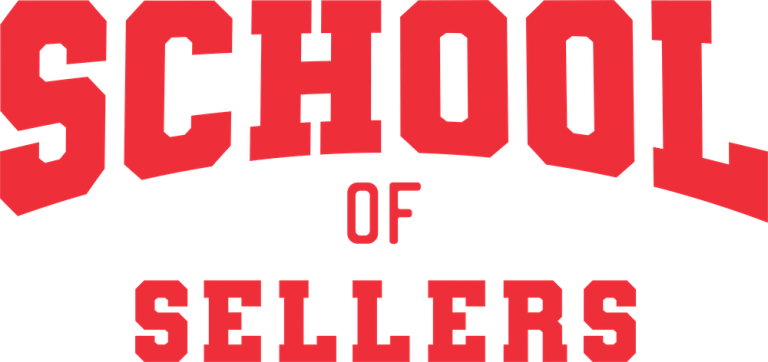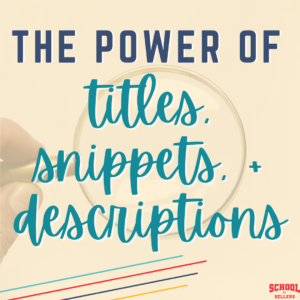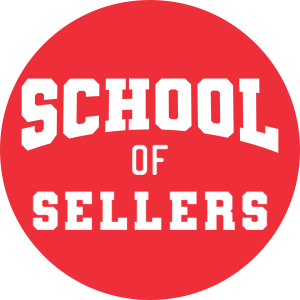Episode Summary
If you need to build your brand but have no clue where to even begin branding your business, listen up! Carly Mitchell, a professional graphic designer, is here to save the day with super practical, easy-to-follow ways to brand your business. Carly will talk us through your best way to create a logo, choosing brand colors, and how to find that perfect font for branding your TpT business.
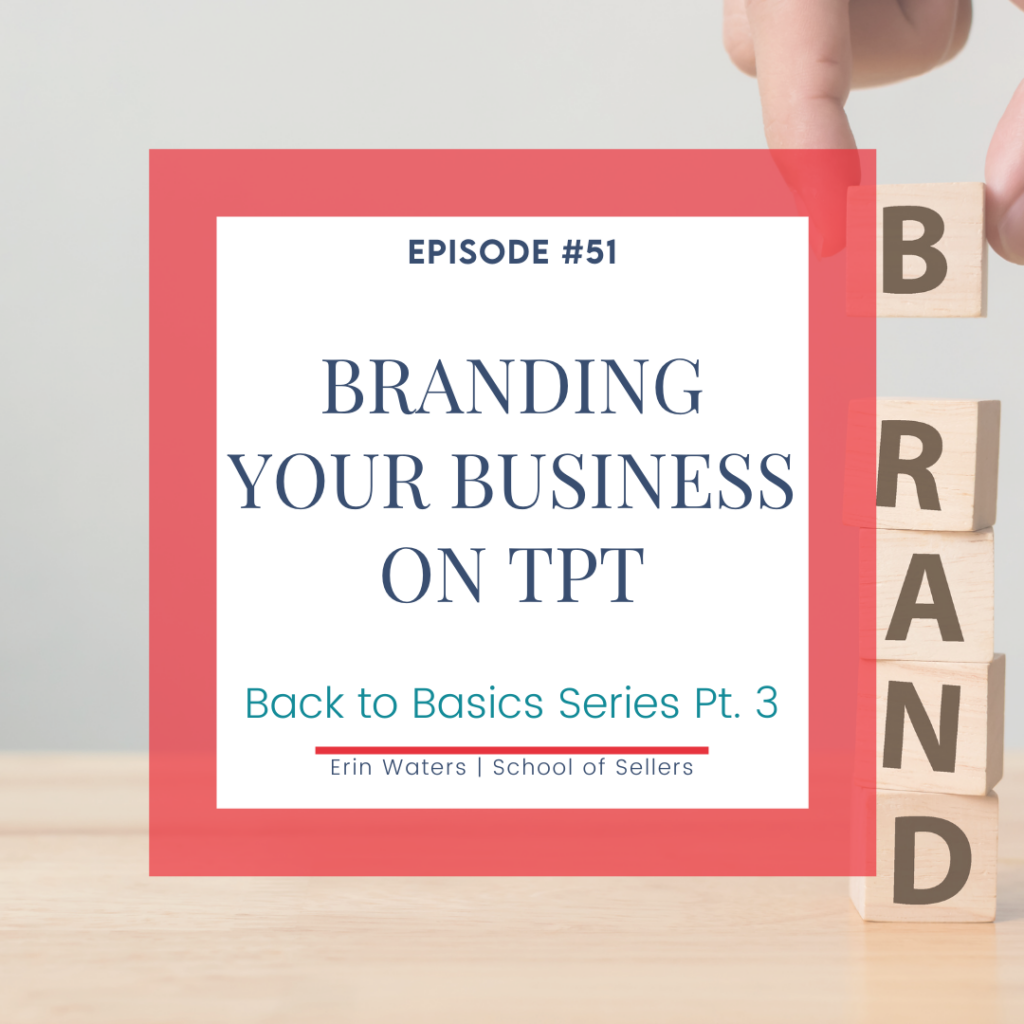
This post may contain affiliate links. As an Amazon Associate, I earn from qualifying purchases.
Introduction to Today’s Episode & Guest
Erin Waters: We are gearing up for another part of our Back to Basics series where we talk about all of the things I wish I would have known when I was first starting out. These are very much tips for anyone who’s thinking about a TPT store or already doing a TPT store and just kind of is getting started. Or if you’ve been around for a while, these are great reminder tips and they might not even be refreshers. They might be brand new information. If you would like to check out other parts of our Back to Basics series, make sure you click the link to hear the other episodes and find the free resources that go along with them.
Today on our show, we are welcoming Carly Mitchell who is a graphic designer. She is an events graphic designer for an events and food company in Columbus, Ohio and she also does freelance work in addition to fine arts. She is talented in many, many, many ways. So without further ado, let’s go ahead and get started. Okay. Carly, thank you so much for being on the show today. I’m really excited and there’s a reason why I’m really excited. Because there’s something about you that our audience doesn’t know. Do you want to share the connection between us?
Carly Mitchell: The connection between us is that I am your favorite sister and that is a fact.
Erin: Yes, Carly is my sister and not only my favorite sister but also my favorite graphic designer in the whole entire universe. And she’s not just a graphic designer. She’s an artist, a painter. She’s done it all and she has such a creative eye and she’s also been helping me with some of my own branding and design stuff for the past several years. And she’s always been my go-to consultant. So she gets texts from me on a weekly basis, asking her to either pick between two things or just to tell me that something either sucks or doesn’t suck. So that’s just the tip of the iceberg I think. But Carly, will you tell us what you do, like what’s your current job, and just your design experience.
Carly: I am currently a full-time graphic designer. I work for a company that’s in the food industry. So a little bit of catering, a bakery, a restaurant. So it’s actually a really fun job. I get to do a lot of things including painting in addition to graphic design. So I’m really just a creator all around. I do a lot of things outside of work too. So I love to use my hands to create. I went to art school. I originally thought I was going to go for graphic design. So I still have a lot of that background, drawing, painting, ceramics, but my day job is graphic design.
Erin: Very cool. Well, I am really excited. I remember even when we were little Carly would make these homemade birthday cards and she would brand them on the back with her Carly Creations logo. And that is actually, that’s your Instagram handle name right now. If we want to see some of your art and designs, we can see you on Instagram. Can you tell us what your handle is?
Carly: Yes. It is @CarlyCreationsStudio.
Introduction to Branding Your TpT Store
Erin: Well, you guys are in for a treat today. We are doing this Back to Basics series and the whole point is to help any people who might be just starting their teacher seller business or even just thinking about starting their own teacher seller business but also to just refresh the minds of sellers who have been around for a really long time. Because it’s like every day I feel like I’m learning something new all over again because things are not only like changing so quickly. There’s just a lot to remember. So it’s nice to have these reminders every once in a while.
I think from a branding standpoint, it’s definitely one of those things that teacher sellers struggle with because it doesn’t come naturally to us. So it’s just another thing we have to learn and add to our business toolkit. But I wanted to talk to you today about the visual side of branding. Because when we talk about a brand, it’s not just the design aspect. There is a lot that goes into it and there’s a lot of messaging behind the images that you see. But Carly is going to help break it down like super basically so that we can talk about the visual elements that you need in your brand. So again, this is just the tip of the branding iceberg. What are the three main areas of visual branding elements that you would say?
Important Elements for Branding Your TpT Business
Branding Your TpT Business: Colors
Carly: Yeah. I think your logo is like first and foremost kind of like the core. But then the two things that go into your logo would be colors and fonts at the very basic.
Erin: Perfect. Okay. Well, so Carly, I hope you will help us today by telling us one thing in each of those categories that we should do and one thing that we should definitely not do. So like do this but don’t do this for fonts, choosing colors, and also logo creation.
Carly: Yeah. I mean it’s hard to choose just one thing but again we’re talking about the basics. So that’s an easy starting point. So let’s talk about color. It’s very overwhelming. There are a lot of colors to choose from.
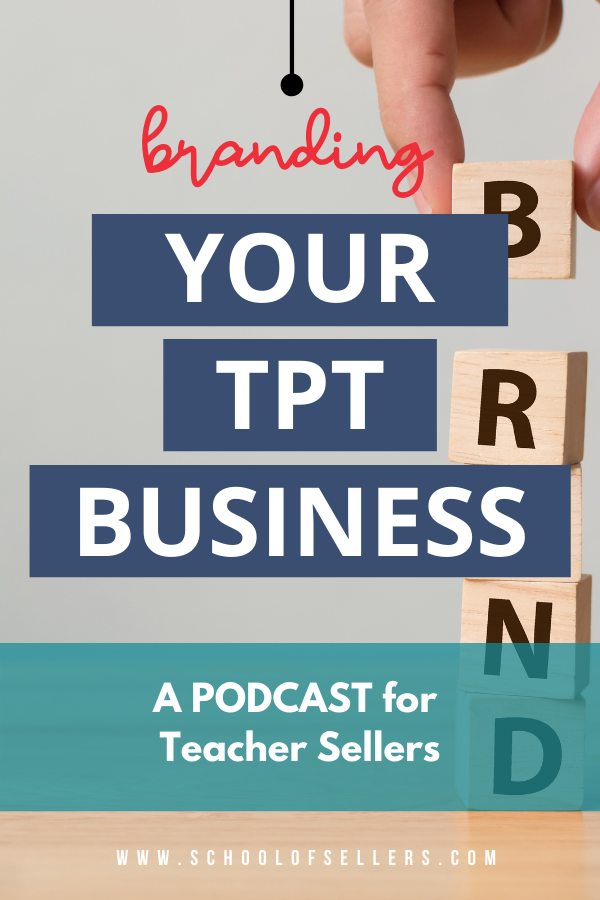
Carly: So my thing that I would say first and foremost to do is to do a little bit of research on the color theory, the color wheel—we all know it exists but do we really know what it means—and also, how emotion is evoked through the use of color. Beforehand, if you’re feeling overwhelmed, it’s a great starting point to go back to the basics. It helps you make decisions. You might learn something that you don’t know.
For example, in the food industry, there have been tons of studies done on the color blue and a lot of food and food companies and restaurants don’t use the color blue just because that’s not a color that people associate with delicious food. And I think part of it is because there isn’t a lot of blue food in the world. So that’s a little bit extreme when it comes to color theory. But it’s like learning those types of things that might make you think a different way about your own branding.
Erin: Yeah. No. And that’s a perfect example because I think that’s definitely something that it would never even cross my mind. If I had zero knowledge about anything color related or branding related, like those thoughts would just never naturally occur to me. Right?
Carly: Right and totally. And it’s the same with color theory too. It’s like you know the color wheel exists and you might have an idea of what colors look good together. But if you learn a little bit science behind it and like maybe you have a lot of colors you want to choose and it could help pare it down which that goes into my don’t when it comes to colors. Don’t choose too many colors.
Which is easy to do. Right? There’s a lot to choose from like I said but a good rule of thumb is to choose one or two main colors and then a few accent or secondary colors that pair well with your main colors. And your color palette’s something that can always evolve. It’s easier to change than some other elements of your brand. So I would start with just a couple main colors and then you can evolve from there whether you want to add darker shades or lighter tints of those main colors. But yeah, not too many.
Erin: Well, that’s really good advice because I know one thing that I am terrible with is making decisions. Like the more choices I have, the harder it is. And I mean that’s just a human thing. But when you get colors involved and it’s like I want all of them, I mean it can get really hard. So question about the palettes because I know I’m the type of person that would much rather see examples of things rather than like try to dream up in my head what color combinations look good. So do you have any websites that you would recommend just for like a beginner user that would be good to explore different color palettes?
Carly: Yeah. When I’m feeling really stuck when it comes to palettes, there’s a website called Coolors.com. It’s just a random color palette generator and I think it shows you like five or six colors at a time. Then let’s say you see a color palette and you really love three of them, you can actually lock those colors in and then keep randomly generating your next two colors so then you can like cycle through and save colors. And it’s super helpful too because it breaks down the color values. So if you ever need like HEX codes for your website or CMYK colors for printing, it’s all right there on their website for free.
Erin: And that’s awesome. Thank you. Because I think tools like that make it extremely easy. And HEX codes are the unique codes assigned to each color. Right? Like every single color has its own code?
Carly: Yeah. So to keep it simple, there’s a lot of different ways to tell the computer what color you want and HEX code is specifically for web design.
Erin: Perfect. And that’s usually something you don’t need to know a whole lot about when you’re first starting your teacher seller business. But it’s good to know about and keep in mind because one day you will need those, probably sooner than later honestly. But that’s just another part of design that I never knew about before I started designing my own things.
Carly: Yeah. And design and how you communicate your brand has evolved because things are so digital now and HEX code is definitely aligned with the digital world.
Erin: Yeah. Well, that’s really helpful. And I’m going to check out, I love that website. I’ve used it before. But yeah, it’s one that I love going back and playing around. So that’s exciting. So tell us then about what would be the next, so fonts would be the next thing after colors?
Branding Your TpT Business: Fonts
Carly: Yeah. So I think you can start with colors and fonts and then those things can feed into your logo. I mean they’re all simultaneously happening but they’re more basic and then the logo is the combination. So for a font, this is so simple and kind of boring but like pick fonts that are legible at all sizes. So you might pick a font that looks great on your big computer screen. But when you look at it on your phone, you can’t read it because obviously text is much smaller on mobile devices.
But that’s good to keep in mind because so many consumers are on their phones. That’s how they shop and go on social media. So you want to keep that in mind specifically with font weights. So you can get a font that is super thin and when you scale it down, it basically disappears. And on the other end of that spectrum, you can get a font that is really heavy and can be really bold looking but when you scale it down, it might all just cram together and look like a block.
Carly: Yeah. So I would just pay attention to that. I mean first and foremost you want people to know who you are and be able to read what you’re putting out to the world. So while it seems really simple, it’s one of the basics that a lot of people forget about.
Erin: And you know what? It’s funny because I was just listening to a podcast the other day and they were saying how human beings are wired, whether you realize it or not, to just want the path of least resistance. So even if you don’t realize it, like you could be subconsciously turned off by a website or a TPT store if you can’t automatically see what they have to offer and read their text.
Then that would be an automatic no-no from your brain I guess. So that’s a good thing to keep in mind. And I like your point about the phone screens too. One of the favorite tricks I’ve learned from one of my teacher seller friends Kristen is to always shrink down your designs like to the size that the thumbnail is going to appear. Because otherwise, you don’t really know what it’s going to look like.
Carly: Yeah. And then don’t for fonts is kind of along the same lines but do not pick fonts that are super decorative or trendy. So decorative just means like could have little nuances that are very detailed that, again, when you scale it down you’re going to lose and those fonts tend to be harder to read. Script fonts is another example. And there’s a time and place to use those fun fonts, whether it’s for fun product or a campaign you’re going to run. So you can use them eventually but your brand is your core again. So you want to keep it clean, simple, classic fonts is the way to go.
Erin: I love that advice. It’s very tempting to see all those cute, trendy fonts and you want to use them everywhere.
Carly: It is.
Erin: That is a constant battle of mine. But I agree. I mean I’ve followed your tips over the years and everything you said is spot on because when the simpler the I go with my fonts, the easier my life has been. Well, good. And there are tons of free fonts available on TPT that you can download. Do you have a favorite website for fonts or do you kind of just—? I feel like I get them from all different types of places.
Carly: Yeah, all different types of places. A good free place is Google Fonts. They have fonts that you can download to your computer and then they have web specific fonts. So you just need to pay attention to that. And then if you have an Adobe subscription, they also have Adobe Fonts which is similar to Google Fonts. But I really love CreativeMarket.com. Again, that’s the type of website that it’s hard to fall into the trendy fonts but there are some really, really good solid clean fonts on that website too.
Erin: Well, and I like your suggestion for saving those fonts. Like there’s a time and a place to use them. So for like your example, I always use the cutesy fonts when I’m doing a personal project like making birthday invitations or something. That’s my time to just go wild and just unleash all those crazy fonts. So it’s kind of like a little carrot at the end of whatever, light at the end of the tunnel. I don’t know if that’s the—
Carly: I’m going with the end of the rainbow.
Erin: Sure, let’s go with that. Okay. So we have fonts and we have colors. And in my opinion, we’re kind of saving the best for last because the logo is where it’s at. So tell us. Share your wisdom, your logo wisdom.
Branding Your TpT Business: Logos
Carly: My logo wisdom. Logos are a beast to conquer. There’s so many different directions you can go. When it comes to the actual design, take color out of it. That is my do. The best logos look great in black and white and color. So for me, when I’m designing a logo, I always start with black and white before any color goes in whether it’s two concepts or ten concepts. I only show them in black and white to my clients because color can skew their opinion of the design itself. So as basic as you can get with the design black and white and this is also beneficial if you’re going to be printing your logo anywhere.
Because number one, it’s easy to do all different types of print methods if you’re going to do merch or anything with it and then it can be cost effective if that’s something that you need to do. But even if you’re not the one designing your logo, whoever you’re working with, you can request that the logo be used as one color and then it’s more versatile to use throughout your designs if you need it on social media as a watermark or on your website. Wherever really.
Erin: I think that’s brilliant. Because yeah, I could totally see how people could just be totally swayed by the color versus the design. And what a challenge for so many people who have zero design eye. That’s another thing. Like if you’re not thinking about it, it’s like oh my gosh, of course, people would be swayed by the color. That’s so smart to do it in black and white for that reason. So I have a question actually about the black and white thing first. So in addition to that—and I’m kind of kind of cheating here because I know we said one do and one don’t—but I feel like so many sellers feel like they have to fit in all of their colors. And am I getting ahead? Is this what your don’t was going to be about?
Carly: Maybe. But let’s hear it.
Erin: So I feel like we feel the pressure to just jam pack every piece of our branding into our logo and use like all of our fonts, all of our colors. And that’s obviously not a good thing but that’s where our brains go. So what would you recommend for someone who is having a hard time deciding like what exactly goes into their logo?
Carly: I think when you think of your logo, it’s your brand mark. It’s not your entire brand. So when you think of a visual brand, there’s many elements: logos, photos, illustrations, fonts, colors. How you treat all of these things, that’s your whole brand and how you get your message across. So really your logo is like your stamp. Like that’s the personality, the name. So you don’t want to add everything at once because then down the line, it’s going to end up clashing with other elements. So my don’t was don’t include too many elements.
Erin: There you go. Okay.
Carly: I mean a good rule of thumb is your name or your business name and an icon. That’s as simple as it is. You can have a line that’s separated or some other geometric elements if you want to put in a box or a circle. But you don’t really need more than an icon and a name or one or the other.
Erin: I was just going to say I think a common myth is that it has to include certain things. Could you just do a text logo or just an icon?
Carly: Yes. I think when it comes to logo, simple is better. And that’s really hard for a lot of people to do even myself. But like you said before, it’s like when you pick the simple font, down the line you’re kind of thankful that you did.
Erin: Yeah. And I think too like it’s so easy to get kind of sick and tired of seeing our branding over and over and over again. So the more simple you can keep it, the longer you can live with it because your brain’s not like trying to process 70 different things every time it sees.
Carly: Yeah. And the more simple you are, the less likely you are to be following trends. If you’re trying to fit in with the current trend and fit in all your brand elements, your logo is going to not be as lasting as it could be.
Erin: Right, right. No, that’s a great point. Okay. I feel like I just got like schooled in Design 101 in the best way possible. So in addition to all of the amazing tips that you’ve already shared, if you were face-to-face with someone who was starting with a blank slate, maybe they’re a new seller, maybe they’re just now building their brand, whatever, what would you tell them?
Carly: All right. So I have a two-part answer for this one. If you’re a new seller, I would start by like finding out who your competition is and just seeing what other sellers are doing when it comes to their branding. And find examples that you really like but then also find examples of what you don’t like. It’s good to know both ends of that spectrum. But in addition to that, once you figure out what other people are doing, I would suggest you step away from doing that. Step away from the internet. Step away from the computer.
Because it can get overwhelming and you want to create branding that sets yourself apart and you want to be original. So it’s hard to find all these logos you like and then you’re like, how do I make my own? So I would say find inspiration in other parts of your life, whether it be your favorite desk decoration that a student made for you or maybe it’s a book that has inspired you and the cover is really colorful and geometric and it originally drew you to the book but then you ended up loving the book and you keep it on your desk and it’s something that you look at every day. For me, I have two mugs.
Erin: I love that.
Carly: They’re handmade. I keep them on my desk. I use them but I keep them here just because I’m very inspired by ceramics, interior design, that sort of thing. So it’s so easy to get sucked into the internet and just consistently scroll and see people doing amazing things. And with your branding, like I said, you want to be original and you want to encourage people to communicate and engage with you. So like what can set you apart? What’s going to make someone want to come and go, what’s this person doing?
Erin: I love that. I just kind of envision a new seller, like I envision giving them homework and being like, okay, your job is to walk around with this notebook all day and just write down every single thing in your life that inspires you. Because you’re so right. Like it’s great to look at your competition for certain reasons just to kind of get a feel and just be aware. I mean you need to stay up to date on everything. But then oh, that stepping away piece is crucial.
Carly: It is. And sometimes it’s hard to open your mind and like get a little creative with it. But it’s fun to think outside the box. And I think one of the things that’s fun to do at the beginning of a project, like this is creating a mood board or an inspiration board. So finding branding you like in other industries, going to Target and walking around and being like, oh, I love the look of that packaging for that razor and like take a picture of it. You can create a mood board with anything that inspires you, with photos and then most of the time there is like a consistent theme across the board that you can see in little different things.
Erin: Oh, mood boards. Now you are speaking my language.
Carly: But I mean if you’re like, let’s say you spend a couple weeks finding things that inspire you or you just like the way that they look, you gather them all together and it’s like oh, I totally see it now.
Erin: That’s such a great tip. We actually doing a mood board exercise inside our beginners course that we’re starting in the spring. So I’ll have to pick your brain on that. But that is like so fun and so logical too to do that. What a great way to kind of zero in on everything. Well, you are just the best and I didn’t tell you I was going to do this. But we’re going to do a quick little lightning round.

Fun Lightning Round of Questions
Carly: Oh gosh. Okay.
Erin: So you have to just answer whatever comes to mind first. We’ll start with an easy one. Favorite color?
Carly: Yellow.
Erin: I knew that one. Most overrated design trend? It could be current or like from the past. It could be any design too.
Carly: Overrated? Drop shadows. No. Can I change my answer for that? Rose gold.
Erin: Rose gold. That’s a good one. Oh okay. Describe design using only one word.
Carly: Feeling.
Erin: Oh, that’s deep. I like it. Okay. This is a good one because I don’t know the answer to this one. Least favorite color?
Carly: Purple.
Erin: Serif or sans serif? It’s a font geek question for you.
Carly: Serif all the way.
Erin: Really? Oh, learning new things about you all the time. Okay. Last question. Favorite Taco Bell menu item?
Carly: We’re actually getting Taco Bell for dinner tonight. Before I didn’t have to go gluten-free, cheesy gordita crunch. I love the taquitos. They don’t have them all the time they bring them back and then they take them away. But my go-to is like a crunchy chicken taco with spicy ranch. So it’s the sauce from the cheesy gordita crunch but without the double shell.
Erin: Okay. I need to do more mixing and matching it seems at Taco Bell because I always just order right off the menu.
Carly: Yeah. If you download the app and you can order straight from there, you can like customize everything.
Erin: Well, that is like the best. Forget design. Okay. Well, thank you for that. And thank you so much for joining me on the show today and sharing all of your wisdom. We talk design all the time and I’m not just saying this but like I learn something new every single time. So I know a lot of sellers are going to get a lot out of this episode. So thank you.
Carly: No problem.
Erin: All right. And just a reminder, if we want to find you on Instagram, it’s @CarlyCreationStudio.
Listeners, thank you so much for tuning in today. It was always a pleasure talking to Carly and today was no exception. So I hope we will see her back on the show to share more design tips with us all. If you would like to check out the rest of the Back to Basics series, you can go to SchoolOfSellers.com/Foundations. And you can also grab a special tool to help you with your own design and branding if you are just starting out in your teacher seller business at SchoolOfSellers.com/Foundations. You can check out our little design guide there. So thanks again and I will see you guys next week.
Conclusion
Links mentioned in this episode:
Looking for another way to get this episode? Download the transcript for Branding Your TpT Business here!
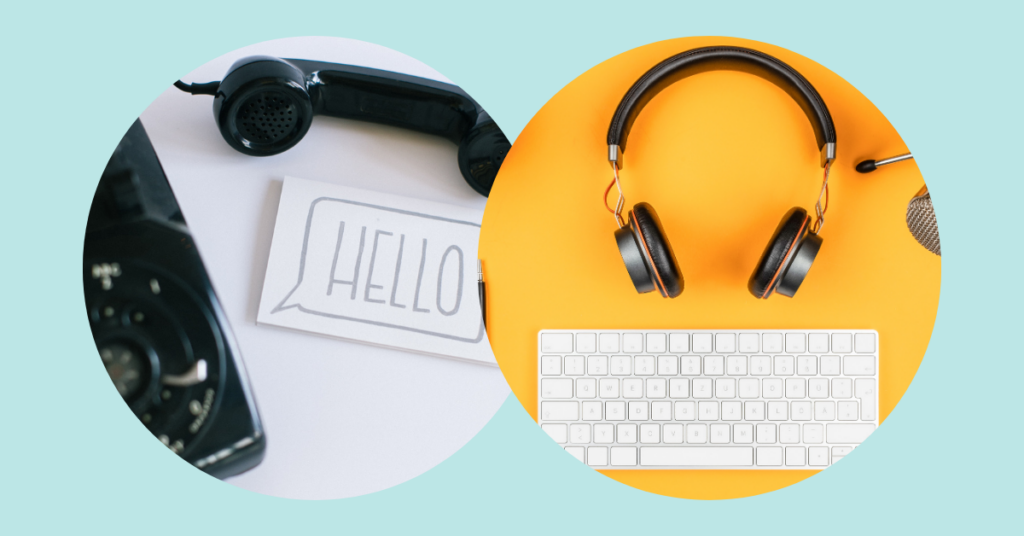
Subscribe to the show!
Are you subscribed to the School of Sellers podcast yet? If not, I want to encourage you to do that today so you never miss an episode. Subscribe on Spotify, Apple Podcasts, Stitcher, Amazon Music, or Google Podcasts!
If you’re feeling generous, I would be eternally grateful if you left me a review over on Apple Podcasts, too. Reviews help other sellers find my podcast just like you. Thank you!
Let’s connect!
Follow us on the podcast, the Facebook group for new sellers, the Facebook group for established sellers, YouTube, Instagram, and TikTok!
